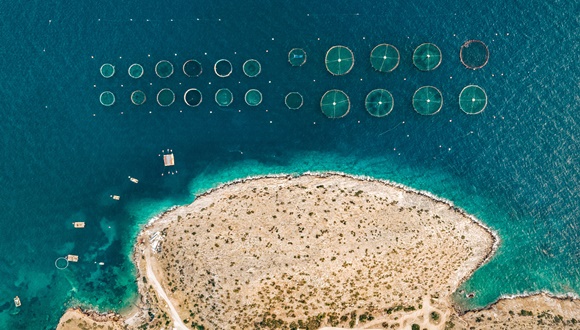Humans use more phosphorus to produce fish than we obtain by harvesting them
There is an imbalance between the amount of phosphorus we use in the production of fish and shellfish (which need it for growth, bones and shells) and the amount we obtain by harvesting them. Remedying it will require aquaculture’s mean phosphorus use efficiency to increase from its current level of 20% to 48% by 2050.

Humans use more phosphorus to produce fish and shellfish (which need it for growth and for bone and shell development) than we obtain by harvesting them. That is the main conclusion of The shift of phosphorus transfers in global fisheries and aquaculture, a study involving CREAF researcher Jordi Sardans and CREAF-based CSIC researcher Josep Peñuelas which has recently been published in the scientific journal Nature Communications. A steep rise in fish production worldwide has altered the flows of phosphorus, a finite mineral that is essential for all forms of life on our planet.
“The radical change global phosphorus transfer has undergone is another of the major impacts of human activity”, says Peñuelas. “Fishing provided us with gains in phosphorus until recently, but its balance is negative now”, continues the researcher, according to whom solving the problem will require fish farms to use the mineral more efficiently. “One way to return to a balanced phosphorus flow would be for aquaculture to increase its mean phosphorus use efficiency from its current level of 20% to at least 48% by 2050, which is a big challenge”, he explains.
The study shows that in 2016 the aquaculture sector used 2.04 teragrams (or trillion grams) of phosphorus to increase fish production, while 1.10 teragrams of the mineral were recovered from aquatic systems in the form of food (through traditional fishing and aquaculture combined). It also identifies the year 2004 as the point at which the landward flow of phosphorus became negative.
The phosphorus dilemma
While a shortage of phosphorus is a potential threat to global food production, its constant, large-scale input into the biosphere entails an imbalance. As stated in the study, phosphorus inputs into the biosphere have quadrupled since preindustrial times due to the rapid swell of human demand for food. The mineral’s distribution is very uneven, and its presence in excessive quantities in croplands, inland waters and coastal seas is not uncommon. It is widely acknowledged that a surplus of phosphorus in inland and coastal waters is behind falls in biodiversity and water quality, changes in ecosystem dynamics, and the appearance of dead zones. Current mitigation efforts and technological innovations are focusing on recycling and improving the management of soil, crop, and livestock phosphorus flows, as well as boosting rates of the mineral’s recovery from waste water.
Food production is the main factor in the large-scale anthropogenic release of phosphorus into aquatic and agricultural ecosystems. In total, 82.4% of phosphate fertilizers are used on croplands and pasture. The rate of use of manure and phosphate fertilizers in agriculture is so high that half of the mineral is not actually taken up by plants, increasing the risk of it being transferred into aquatic ecosystems. The amount of phosphorus applied to cultivated soils in livestock manure exceeds the amount of mineral phosphate fertilizer used worldwide, and the livestock sector is to blame for a third of the phosphorus transferred into fresh water. Human waste processing and the use of detergents also release phosphorus into inland and coastal waters.
Global fishery production is a food production subsector that plays a critical role in land and aquatic nutrient flows, as it returns nutrients to land and human systems. Nonetheless, it is an overlooked element of global anthropogenic phosphorus flows. Aquaculture, which has experienced greater growth than any other food production subsector over the last decade, depends on an external supply of phosphorus through feeds and fertilizers that enhance aquatic ecosystem productivity. Over 90% of fish farming takes place in Asia, where phosphorus use efficiency is generally low.
The imbalance in the planet’s net phosphorus flow is a global, cross-sector problem, and remedying it will require a global, cross-sector response.
Huang, Y., Ciais, P., Goll, D. S., Sardans, J., Peñuelas, J., Cresto-Aleina, F., & Zhang, H. (2020). The shift of phosphorus transfers in global fisheries and aquaculture. Nature Communications, 11(1), 1-10.







